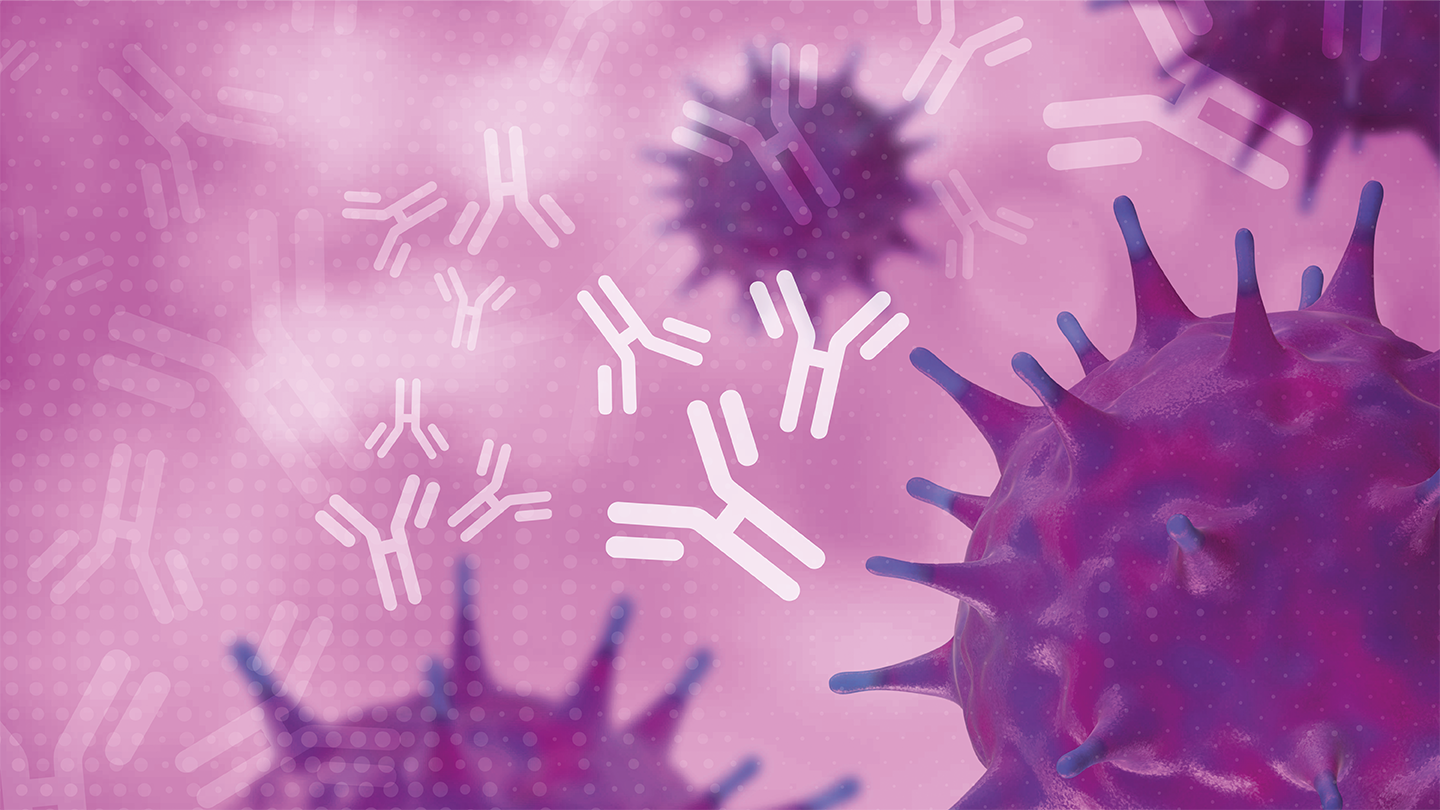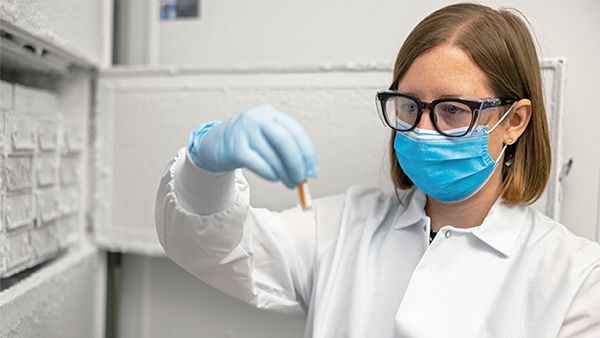Live at ECCMID: Day 3
Reflecting on the past year in public health
Welcome to our ECCMID day three roundup! We’re over halfway through the show, and though our feet may hurt and our eyes are a little tired, we’re not slowing down. For today’s highlight, I attended the Year in Public Health session – a newcomer in the series this year. Tyra Grove Krause (Statens Serum Institut, Denmark) spoke on COVID-19, changing infection patterns following the lifting of pandemic restrictions, and a “peculiar” outbreak in Denmark in recent months. After which, Joël Mossong (Luxembourg Health Directorate, Luxembourg) reflected on major outbreaks this past year (a salmonella outbreak linked to chocolate eggs, severe acute hepatitis of unknown etiology in children, global mpox outbreak) and randomized phase 3 trials of new respiratory syncytial virus (RSV) vaccines.
Year in Public Health
Tyra Grove Krause, Denmark
COVID-19
Starting off with Omicron’s dominance over the past year, researchers found a 25 percent decreased risk of being hospitalized with Omicron compared with Delta, which was consistent across different vaccination subgroups, with three doses halving an individual’s risk of being hospitalized with the variant.
What was the risk of letting the virus loose? Long-COVID has taken a toll on many people throughout the pandemic; Grove Krause presented a paper showing a consistently lower risk of long-COVID symptoms in those infected during the Omicron period compared with those infected during the Delta period. This effect was consistent across age groups and lower in individuals who had been vaccinated more than three months prior to infection. Grove Krause notes this is a nice example of how citizen data has been used during the pandemic to show how symptoms change over time with new variants.
A new term that has been added to our vocabulary the past few years, Grove Krause notes, is “Omicron soup.” A study recently published in Nature describes the escape mutation profiles of new different Omicron sub variants and investigates the neutralization activity of monoclonal antibodies isolated from individuals with BA.2 and BA.5 breakthrough infections. The paper tries to infer convergent RBD mutations using deep mutational scanning profiles.
What did they find? The immune pressure on the receptor binding domain (RBD) became increasingly concentrated, which could explain the sudden acceleration of SARS-CoV-2 RBD evolution and convergence pattern. Moreover, the convergent RBD mutations could be accurately inferred by deep mutational scanning profiles.
Respiratory syncytial virus patterns post-COVID-19
Moving on to respiratory syncytial virus (RSV), Grove Krause presents data showing that the burden of RSV cases seemed to be higher and started earlier in the two latest seasons compared with previous seasons. However, there has been more testing in recent seasons, so hospital admissions may actually be a better way to observe trends; by doing so, we can see that there has been an earlier out-of-season onset of the epidemic in the last two seasons and they have been more intense than previous years.
Outbreak in Denmark
Moving on to a “peculiar” outbreak to round off the talk, nine cases of NDM-5/OXA-48-carbapenemase-producing Enterobacter hormaechei ST79 were detected in Denmark and one in Iceland between October 2022 and January 2023. There was no evidence of nosocomial transmission, but interviews revealed that the patients had all been treated with dicloxacillin capsules. Cultures from the surface of the capsules in Denmark revealed the same bacteria, which strongly linked the capsules as the source of the outbreak. The product was withdrawn from the market as a result of the findings.
To date, Grove Krause reports there have been 14 cases of E. hormaechei and resistance genes NDM-5 og OXA-48. The source of contamination is thought to be the brushes used to remove dust from the capsule surfaces. This is a particularly interesting outbreak, she highlights, because it illustrates the importance of having AMR surveillance in place. An estimated 18,000 people may have been exposed between August 2022 and February 2023, and those exposed are recommended to inform their GP of dicloxacillin in case of infection and they should be screened in case of hospitalization to avoid transmission within hospitals.
Joël Mossong, Luxembourg
Salmonella outbreak
A salmonella outbreak was first detected in the UK as a cluster of cases of identical monophasic Salmonella typhimurium. Patient and parent interviews revealed that many of the patients had eaten chocolates by Ferrero, and it quickly became clear that the chocolate eggs came from one production plant in Arlo, Belgium. The company had already had problems with salmonella for a few months but were unable to deal with it, so the Food Security Agency shut down the plant.
Overall, there were 455 cases globally, with the peak happening just before Easter 2022. As soon as the product was recalled, the case numbers diminished quite dramatically and there are no longer any isolates being detected that link to it.
The hospitalization rate was 42 percent of 116 case – a high rate, Mossong notes. And genomically it wasn’t just one strain, there were two isolates found in humans and the plant environment, but no isolates were detected in the chocolate eggs themselves (according to Mossong, finding salmonella in chocolate eggs is a particularly difficult feat).
The plant reopened in July 2022, but they had to refurbish the whole production line and, in particular, replace the anhydrous milk fat tanks used in chocolate egg production; the isolates haven’t been detected since.
Severe acute hepatitis of unknown etiology in children
An outbreak of severe acute hepatitis of unknown etiology in children affected multiple countries in 2022, but Mossong highlights the absence of a specific case definition made it difficult to work with. There was no surveillance system when detecting something as rare as severe hepatitis, especially in children, but the WHO eventually proposed a definition so that countries could start to detect and report cases – though the definition was still quite broad. Mossong reported that cases peaked in April–May 2022 and tailed off throughout the year, with the age distribution mostly children under five years old.
What was the leading suspected cause? Human adenovirus was isolated in most of the children with acute hepatitis, but its role in disease pathogenesis is yet to be established. In a case-controlled investigation of the link between adeno-associated virus (AAV2) infection and host genetics in disease susceptibility, researchers found a key genetic component in disease susceptibility – HLA class II DRB*04:01 allele – in 93 percent of cases. They also detected recent infection with AAV2 in 81 percent of patient plasma and liver samples. Overall, they concluded that the outbreak of severe acute hepatitis in children was associated with AAV2 infection, which was most likely acquired as a coinfection with HAdv which is required to support AAV2 replication and HLA class II-related disease susceptibility.
Global mpox outbreak
Presenting a graph with a bell curve so perfect it would make any statistician swoon, Mossong reported that 25,874 mpox cases have been detected in Europe so far, mostly in men between 31-40 who reported they were men who have sex with men.
Over one million doses of modified vaccinia ankara-bavarian nordic (MVA-BN) have been administered in the US between 2022/23, but just how good is it at protecting against mpox? In a study by Zaeck and colleagues, non-primed individuals who received a two-shot immunization series exhibited low levels of MPXV-neutralizing antibodies. The best immune responses were found in older men who had already been vaccinated against smallpox as a child. (If you want to read more about the study, we covered it earlier this year on ID Transmission!)
Mossong goes on to say that we don’t yet know how well natural or vaccine immunity protects against reinfection, but with reports of reinfection coming through, it’s suggested that people can get sick multiple times and be reinfected if re-exposed to mpox.
RSV vaccines
RSV was first identified in 1956, but there has been no safe and effective vaccine – until now. Annually, RSV is associated with 33 million cases of bronchiolitis/pneumonia, 3.6 million hospital admissions worldwide, and 120,000 children die with the disease – half of them under six months old.
Several companies have been working to develop vaccines; in the New England Journal of Medicine, there have been no less than four trials published in different populations. The trials come to very similar conclusions on vaccine effectiveness against severe infection (80–94.1 percent) and protection against infection (57.1–72 percent). Effectiveness against severe infection throughout the studies was higher than protection against infection. Which vaccine will be the first to receive approval? Perhaps by ECCMID 2024 we’ll find out.





